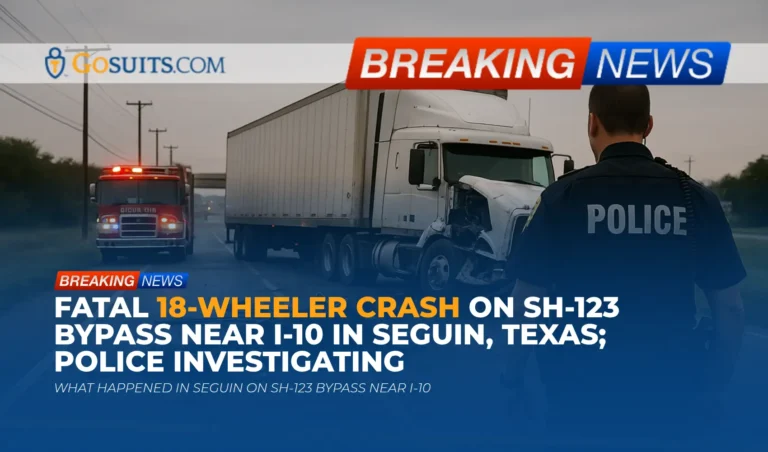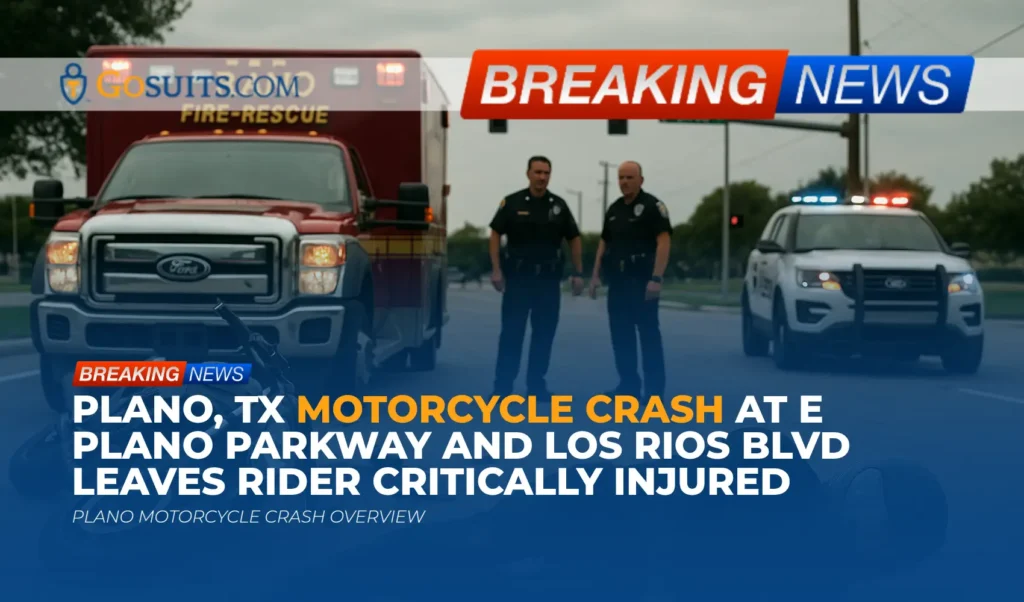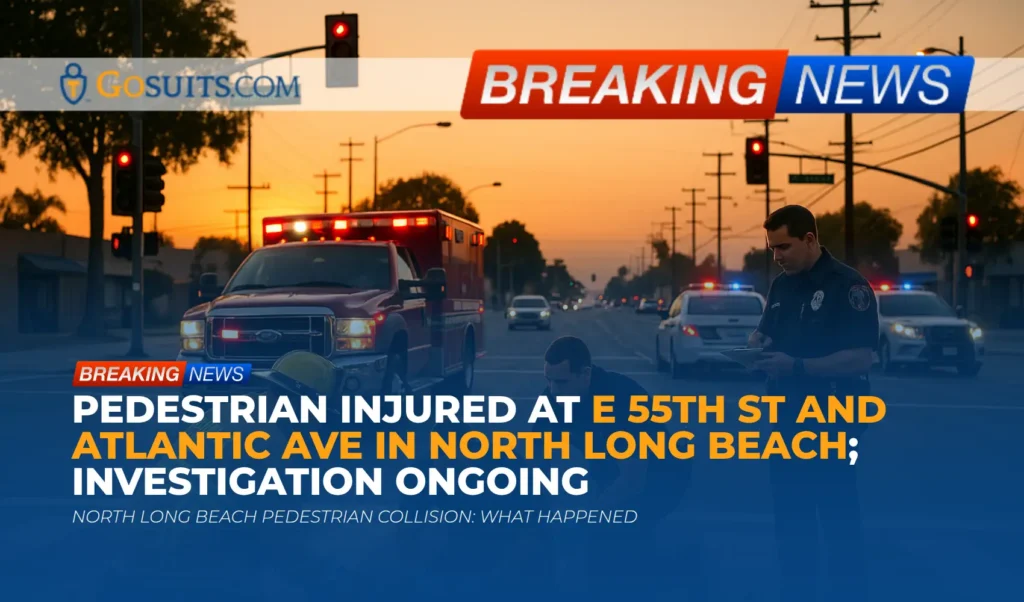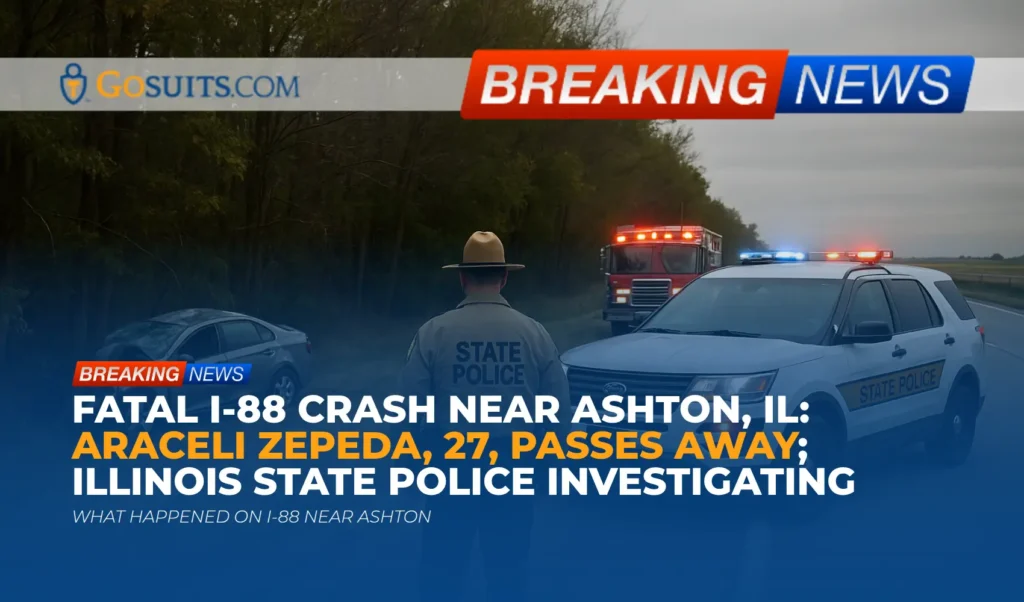- What happened in Seguin on SH-123 Bypass near I-10
- What police have reported so far
- What investigators typically review after an 18-wheeler crash
- Why collisions with 18-wheelers are often severe
- Key records to request and where to get them
- Preserving evidence in a trucking case
- Potential civil liability in a fatal trucking collision
- Insurance considerations and common pitfalls
- Practical steps to take after a fatal 18-wheeler crash in Texas
- Deadlines that matter in Texas
- Highway interchange context and safety considerations
- Commentary from Gosuits Seguin, Texas Personal Injury Attorney
- Why taking action matters now
What happened in Seguin on SH-123 Bypass near I-10
A fatal crash occurred shortly before 7:00 a.m. on Wednesday, October 22, 2025, in the southbound lanes of the SH-123 Bypass in Seguin, just before the interchange with Interstate 10. Early statements indicate the driver of an 18-wheeler lost control for reasons still under investigation. One person tragically died at the scene. Officials have not yet released the identity of the deceased, pending family notification. Seguin Police and Seguin Fire and Rescue responded, secured the area, and managed the roadway closure that followed. At the time of the initial report, there were no other injuries or vehicles confirmed to be involved.
Losses like this are devastating. Our thoughts are with the family and community members affected by this tragedy.
What police have reported so far
Based on available information:
- Location: SH-123 Bypass southbound, just before the I-10 interchange, in Seguin, Texas.
- Timing: Shortly before 7:00 a.m. on October 22, 2025.
- Vehicles: An 18-wheeler was involved. No other vehicle involvement has been officially reported at this time.
- Casualties: One confirmed fatality at the scene.
- Status: Investigation ongoing. Roadway closure occurred to allow emergency response and collision investigation.
Because the incident happened near a major interchange, investigators will consider traffic volume, merging activity, signage, and surface conditions as part of their analysis. No conclusions have been announced regarding the cause.
What investigators typically review after an 18-wheeler crash
In serious crashes involving commercial motor vehicles, agencies and reconstruction teams commonly evaluate a broad set of data and physical evidence. These materials can be critical both for safety reviews and for any civil claims that follow:
- Electronic logging device (ELD) and hours-of-service (HOS) records: Federal rules require most motor carriers to use ELDs to record driver hours. Investigators may analyze compliance with rest and driving-time limits. See the Federal Motor Carrier Safety Administration’s ELD information and HOS regulations at FMCSA ELD and 49 CFR Part 395.
- Truck engine control module (ECM) or event data: Depending on the vehicle, speed, throttle, braking, and fault codes may be available to help reconstruct the moments leading to the collision.
- Driver qualification and training records: These include licensing, medical certification, and safety history, typically maintained by the motor carrier under federal rules.
- Vehicle inspection, maintenance, and repair records: Documentation can reveal whether any mechanical issues existed and whether the carrier adhered to inspection and maintenance schedules.
- Cargo loading and securement: Load distribution, weight, and securement practices may be reviewed if load shift or overweight conditions could have contributed to loss of control.
- Scene evidence: Skid marks, debris fields, fluid trails, final rest positions, and roadway conditions (lighting, signage, surface friction, grades, curves) are mapped and photographed.
- Video and telematics: Dash cameras, nearby traffic cameras, and fleet telematics data can provide objective timelines.
- Post-accident drug and alcohol testing: Under federal rules, commercial drivers are subject to post-accident testing in qualifying circumstances. See 49 CFR § 382.303.
Why collisions with 18-wheelers are often severe
Commercial tractor-trailers can weigh up to 80,000 pounds when fully loaded, giving them long stopping distances and higher crash forces compared to passenger vehicles. When a large truck loses control near a busy interchange, the combination of speed, merging traffic, and limited escape paths can raise the risk of catastrophic outcomes. National traffic safety data consistently show that crashes involving large trucks result in thousands of fatalities and many more severe injuries each year. For context on national trends, review the National Highway Traffic Safety Administration’s resources on large trucks and the Fatality Analysis Reporting System at NHTSA Large Trucks and NHTSA FARS.
In Texas, heavy truck traffic is common along interstate corridors like I-10 and connector routes such as SH-123. Statewide crash data and safety program information are maintained by the Texas Department of Transportation (TxDOT), including official crash reports and analytics through the Crash Records Information System. See TxDOT CRIS Crash Reports.
Key records to request and where to get them
Official documents provide the most reliable picture of what happened. Requesting them early helps preserve clarity and can support insurance claims and any civil case review.
Police crash report and related materials
- Seguin Police Department (SPD): The investigating agency is expected to be SPD based on the location. SPD’s public records and non-emergency contact information are available through the City of Seguin government website at seguintx.gov. It is common to request the crash report, photographs, and 911 recordings or CAD logs via a public information request under the Texas Public Information Act. See Texas Government Code Chapter 552 at Chapter 552.
- TxDOT crash report (CR-3): In Texas, most official crash reports can be purchased statewide through TxDOT’s portal. Visit TxDOT CRIS Crash Reports. TxDOT provides guidance on eligibility and required information to locate the report.
Autopsy, inquest, and death records
- Texas inquests and autopsies: Texas law outlines when an inquest or autopsy is required and how those records are handled. Procedures are described in the Texas Code of Criminal Procedure, Chapter 49. See Chapter 49. In some counties, a medical examiner’s office oversees autopsies. In others, a Justice of the Peace conducts inquests and may order autopsies.
- Medical examiner provisions: Requirements and record considerations for medical examiner jurisdictions appear in Article 49.25 of the Code of Criminal Procedure. See Chapter 49 for the statutory framework.
- Death certificate: Certified copies can be requested through the Texas Department of State Health Services Vital Statistics. See Texas DSHS Vital Statistics.
Additional items to consider
- Body-worn and dash camera footage: If SPD or other agencies use video systems, those materials may be subject to request with appropriate redactions under the Texas Public Information Act.
- Traffic camera or work zone records: If nearby TxDOT or municipal cameras captured the incident, records may be available through the relevant agency. Availability varies by system and retention policy.
- Tow, storage, and vehicle inspection documents: Post-crash vehicle handling logs may help track chain of custody and timing, which matter for later inspections.

Preserving evidence in a trucking case
Time-sensitive evidence can be lost quickly. Preservation requests sent promptly to the motor carrier and any other potentially responsible parties are often crucial.
- Driver logs and supporting documents: Federal rules require motor carriers to retain certain hours-of-service records for limited periods. ELD data and supporting documents are commonly kept for six months, after which they may be overwritten in the ordinary course of business. See 49 CFR Part 395.
- Accident register and investigation materials: Motor carriers must maintain an accident register and supporting information for at least three years. See 49 CFR § 390.15.
- Post-accident testing documentation: If federal criteria are met, carriers must conduct drug and alcohol testing and retain documentation. See 49 CFR § 382.303.
- Vehicle and component inspections: Quick access to the tractor and trailer avoids spoliation of physical evidence and allows experts to evaluate tires, brakes, steering, and electronic modules.
- ECM and camera data: Some data can be overwritten or lost when a vehicle is put back into service. Prompt preservation requests can help secure this.
- Third-party data: Shippers, brokers, consignors, and maintenance vendors may hold communications, load tickets, and work orders relevant to causation and responsibility.
Because preservation rules and retention periods are technical, it is prudent to have a qualified attorney prepare and send detailed evidence-hold notices early.
Potential civil liability in a fatal trucking collision
While fault in this Seguin crash remains under investigation, families often have questions about who could be responsible in similar incidents. Depending on the facts, potential civil responsibility can extend to multiple parties:
- Commercial driver: If negligent operation contributed to the crash, the driver may be liable.
- Motor carrier/employer: Carriers can be responsible for their drivers’ negligence and may also face direct claims for negligent hiring, training, supervision, dispatching, or maintenance.
- Maintenance contractors: Negligent inspection or repair work can lead to component failures.
- Cargo shippers/loaders: Improper loading, overweight conditions, or shifting cargo can cause loss of control.
- Vehicle or component manufacturers: If a defect caused or contributed to the crash, product liability may be implicated.
- Roadway entities: In limited circumstances, unsafe conditions or inadequate warnings may raise issues related to roadway maintenance or design. Special notice rules apply when government entities are involved.
Texas allows families to bring wrongful death claims and estates to bring survival claims. See Texas Civil Practice and Remedies Code Chapter 71 (Wrongful Death and Survival), including Chapter 71 and the survival provision Section 71.021. Texas proportionate responsibility rules apportion fault among parties and can affect recovery; see Chapter 33.
Every case turns on specific facts, including vehicle data, witness accounts, roadway evidence, and compliance with federal and state safety rules.
Insurance considerations and common pitfalls
Commercial motor carriers typically carry layered insurance policies and may involve self-insured retentions or multiple insurers. Shortly after a serious crash, insurers and risk managers often start gathering statements and documents. There are common pitfalls to keep in mind:
- Recorded statements: Statements made to insurers can be used later. It is generally advisable to speak with a qualified attorney before giving any statement to an adverse insurer.
- Quick settlement offers: Early offers may not account for the full scope of losses. Without complete records and expert review, families may not have the information needed to evaluate long-term impacts.
- Medical and employment record releases: Broad authorizations can grant access to sensitive information not necessary for initial claim handling.
- Property damage vs. injury claims: Carriers may separate these processes. Keep consistent documentation and avoid contradictions between forms or statements.
- Social media and public posts: Online content can be discovered and used to challenge claims. Caution and privacy are important.
If making a claim with an insurance company is contemplated, consult an attorney first to understand rights and obligations. What is said to an insurer can be used against the claimant later.
Practical steps to take after a fatal 18-wheeler crash in Texas
- Secure official reports: Request the Seguin Police Department crash report and any available supplemental materials. Then request the official TxDOT CR-3 report via TxDOT CRIS.
- Request inquest or autopsy documentation: Contact the county authority responsible for inquests or medical examinations in the jurisdiction of the death. See Texas Code of Criminal Procedure Chapter 49.
- Obtain certified death certificates: Order through the Texas Department of State Health Services at DSHS Vital Statistics.
- Preserve evidence: Ensure timely preservation letters are sent to the motor carrier, insurer, and any other potential custodians of data, including requests to retain ECM, ELD, dash-cam video, driver logs, maintenance records, and cargo documentation.
- Document losses: Keep organized records of funeral and burial expenses, medical bills, counseling or support services, lost income, and other out-of-pocket costs.
- Avoid early statements to adverse insurers: Consult an attorney before any recorded interview or comprehensive release is provided.
- Consider emotional support: Grief and trauma counseling can help families navigate an extraordinarily difficult period. Primary care providers or local health departments can provide referrals.
Deadlines that matter in Texas
- General civil limitations period: Many Texas wrongful death and personal injury claims have a two-year limitations period. See Texas Civil Practice and Remedies Code Section 16.003. Calculating deadlines can be nuanced, so specific legal guidance is important.
- Governmental entities notice: If a claim may involve a governmental entity (for example, certain roadway conditions), the Texas Tort Claims Act has notice requirements that can be as short as six months. See Section 101.101. Some local charters require even earlier notice.
- Evidence retention windows: Some federally required records in trucking are retained for limited periods. For example, hours-of-service supporting documents are commonly retained for six months, and carriers must keep an accident register for three years. See 49 CFR Part 395 and 49 CFR § 390.15.
Highway interchange context and safety considerations
Interchanges like SH-123 at I-10 typically include merging lanes, variable speeds, and high traffic density during commuting hours. Investigators often evaluate:
- Traffic flow and congestion at the time of day: Commuter peaks can create abrupt braking and lane changes.
- Signage and pavement markings: Visibility, clarity, and condition play roles in driver awareness.
- Roadway geometry: Curves, grades, and ramp design can influence sight distance and stopping distances.
- Surface conditions: Wet or worn surfaces can affect traction and control.
- Work zones: Temporary traffic control devices, lane shifts, and reduced speeds alter driver expectations and available maneuvering space.
These factors are part of a standard crash reconstruction. Until official findings are released, the specific cause in this Seguin incident remains unconfirmed.

Commentary from Gosuits Seguin, Texas Personal Injury Attorney
We extend our sincere condolences to those grieving after this tragic loss on SH-123 near I-10. Families facing sudden, life-altering events deserve clear information and steady support. This commentary is offered for general educational purposes in the wake of the reported incident.
From a civil-injury perspective, a loss-of-control event involving a commercial 18-wheeler warrants a thorough, prompt investigation. Objective data often tells the story: electronic logging records, ECM downloads, post-crash inspections, dash or roadway camera footage, and witness statements. Near a major interchange, acceleration, deceleration, and merging patterns can add complexity, which is why timing, speed data, and lane-position evidence matter. It is important to secure these materials quickly so that nothing critical is lost due to routine data overwrites or vehicle repairs.
In our experience, large motor carriers and their insurers mobilize quickly after serious crashes. Adjusters and defense teams may seek early statements or broad medical and employment releases. Those requests can seem routine, but they are designed to limit exposure and influence the narrative before all the facts are known. Without context, people may unknowingly provide statements that are later taken out of context or used to challenge their claims. Being thoughtful and deliberate about communications helps protect one’s rights.
An initial legal consultation can clarify who needs to be notified, what evidence should be preserved, and how insurance layers may apply. Consultation also helps families avoid common missteps, like accepting premature settlement offers before the full scope of losses and responsibilities is understood. A free consultation is a practical way to understand options and next steps without committing to a course of action.
Why taking action matters now
- Preservation of critical evidence: Electronic logging device data, engine control module data, and camera footage can be overwritten quickly. Sending timely preservation notices increases the chance that key records are retained.
- Securing official documents: Obtaining the police crash report, TxDOT CR-3 report, and inquest or autopsy records establishes the foundation of what happened and when. Official records help avoid confusion later.
- Meeting legal timelines: Limitations periods and governmental notice requirements can be shorter than expected. Acting early reduces the risk of missing a deadline that could limit legal options.
- Avoiding insurance pitfalls: Recorded statements and broad authorizations can shape the claim before all facts are known. Understanding rights before speaking with insurers helps prevent preventable setbacks.
- Coordinating inspections: Arranging prompt, independent inspections of the tractor, trailer, and any involved equipment preserves mechanical evidence that may be impossible to recreate later.
- Comprehensive documentation of losses: Early, organized record-keeping for funeral costs, counseling, lost income, and related expenses helps ensure nothing is overlooked in later evaluations.
- Peace of mind during a difficult time: Clear steps and timely actions provide structure and protect options while families focus on mourning and support.
Individuals affected by serious trucking incidents benefit from timely information, careful documentation, and early guidance on evidence and deadlines. Before contacting an adverse insurer, it is prudent to consult a qualified attorney; what is said to an insurance company can be used against the claimant later.






